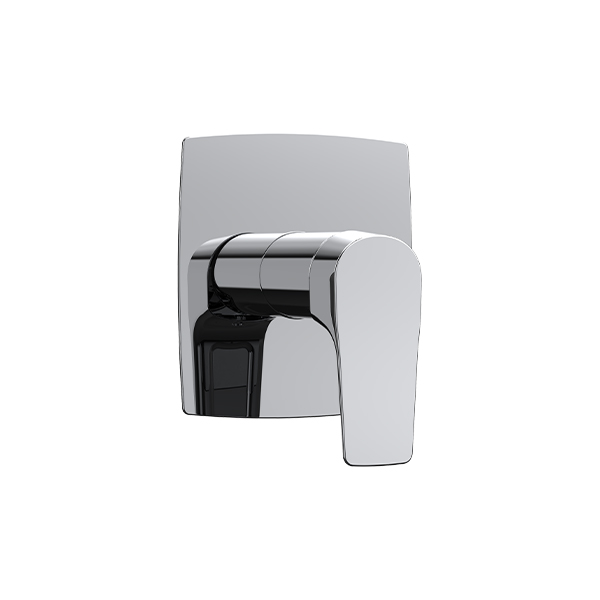The concealed shower system, with its minimalist aesthetic and space-saving design, represents a significant integration of plumbing and architecture. Unlike exposed systems, its core components—the thermostatic or pressure-balancing valve, and the water outlets—are embedded within the wall, presenting a clean, uninterrupted surface. This integration, however, complicates maintenance and replacement decisions. Determining the appropriate time for replacement involves a careful assessment of performance degradation, material failure, and evolving user needs, balancing the considerable undertaking of wall access against the long-term benefits of a reliable and efficient system.

Part 1: Observable Performance and Functional Failures
The initial indicators for replacement often manifest as noticeable changes in the shower's performance or consistent operational problems that cannot be easily remedied.
1.1. Inconsistent Water Temperature and Pressure
A primary function of the concealed valve is to maintain stable water temperature and pressure. If the shower begins to deliver sudden bursts of scalding hot or cold water despite no change in the tap position, it signals a failure of the internal pressure-balancing cartridge or thermostatic element. Similarly, a significant and persistent drop in water pressure from the showerhead, not attributable to general household plumbing issues, can indicate a blockage or failure within the valve. These inconsistencies represent a compromise in both comfort and safety.
1.2. Persistent Leakage and Dripping
While a dripping showerhead can sometimes be fixed by replacing a washer on the exposed arm, persistent water leakage from the showerhead or, more critically, water seepage from the wall around the shower plate or tiles suggests an internal leak from the concealed valve. This type of leak is a serious concern, as it can cause unseen water damage to wall structures, promote mold growth within the cavity, and higher water bills. Repeated repairs that offer only temporary relief point towards a failing valve unit.
1.3. Difficulty in Operation and Control
The user interface—the handle or control knob—should operate smoothly. Increased stiffness, a grinding sensation when turning, or an inability to precisely adjust the flow or temperature are signs of wear in the valve's internal mechanism. If lubrication or minor adjustments to the external handle do not resolve the issue, the internal cartridge is likely worn and may require replacement, which can sometimes necessitate accessing the entire unit.
Part 2: Material Degradation and Corrosion
The internal components of a shower system, though hidden, are subject to chemical and physical wear over time, which can compromise the system's integrity.
2.1. Internal Corrosion and Limescale Accumulation
In areas with hard water, limescale can build up inside the valve and pipes, restricting water flow and impairing the movement of internal parts. Furthermore, components made of brass or other alloys can be susceptible to corrosion over an extended period, potentially pinhole leaks or the seizure of moving parts. If descaling treatments prove ineffective, the cumulative damage may justify replacing the valve assembly.
2.2. Failure of Critical Seals and Diaphragms
Thermostatic and pressure-balancing valves rely on a series of rubber or polymer seals and diaphragms to function. These materials have a finite lifespan and will eventually harden, crack, or lose elasticity. This degradation is a common cause of cross-flow mixing ( temperature fluctuations) and internal leakage. When the failure is traced to these internal seals, and replacement parts are obsolete or unavailable, replacing the entire valve unit becomes a practical necessity.
Part 3: Systemic Issues and External Factors
Sometimes, the need for replacement is driven by factors external to the shower unit itself, relating to the broader plumbing system or the building's structure.
3.1. Compatibility with Plumbing Renovations
A decision to upgrade a home's entire plumbing system, such as replacing old galvanized steel pipes with modern PEX or copper, may present an opportunity to replace an aging concealed valve. Similarly, if a home is switching to a more efficient water heater system (like a tankless model), the existing shower valve may not be fully compatible with the new system's pressure dynamics, making replacement advisable for performance.
3.2. Evidence of Concealed Water Damage
The discovery of moisture stains on walls or ceilings adjacent to the shower, persistent mold growth on wall surfaces, or a softening of wall materials can indicate a leak from the concealed plumbing. In such cases, investigative demolition is required to locate the source. Once the wall is opened, if the valve unit is found to be the source and shows significant corrosion or damage, replacement is the reliable course of action during the repair process.

 English
English Español
Español русский
русский

